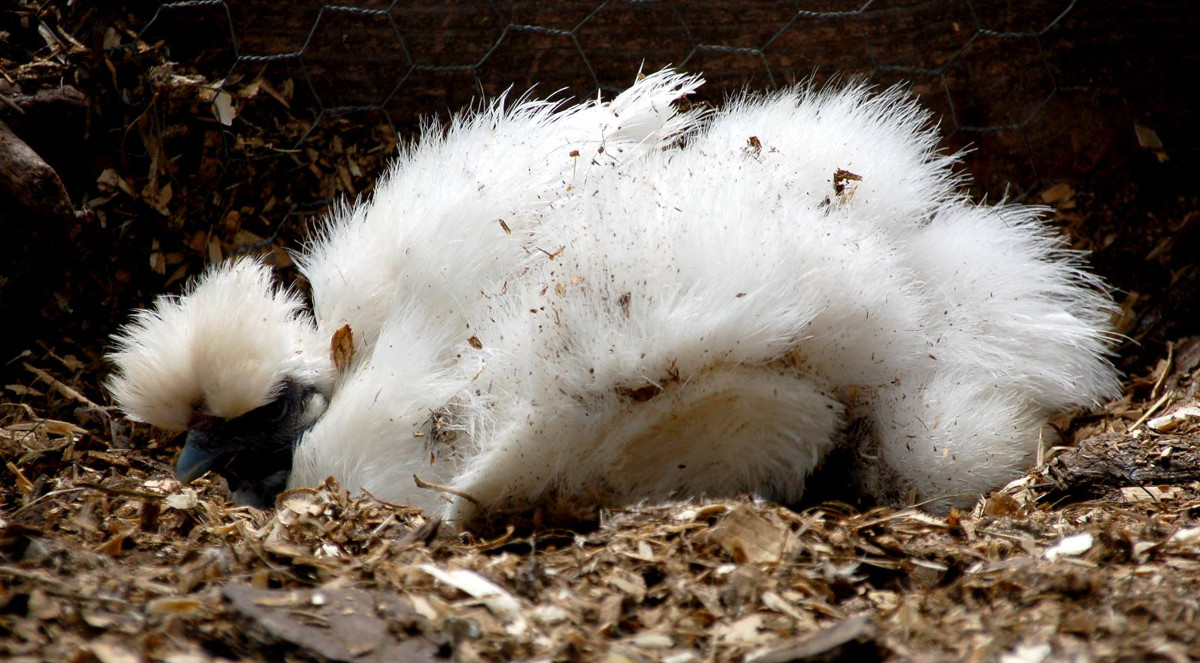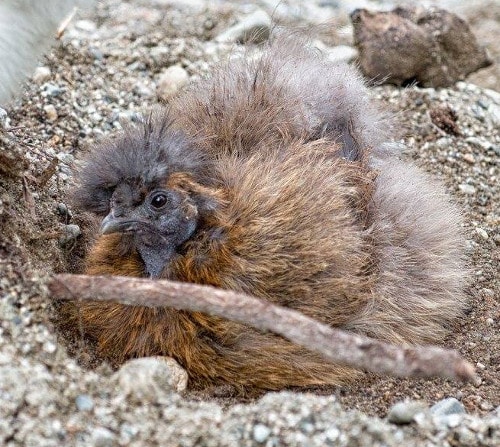Do Silkie chickens need a dust bath?

A dust bath is essentially a “bath” your birds will take in dry dirt. They're tossing dust into their feathers, which helps repel external parasites like lice or mite
All chickens should have access to dust baths. It doesn’t matter what breed or age of chicken, it is instinctual for them to wallow in the dust and dirt. It is their way of getting clean and practising good hygiene.
If left to their own devices, chickens will create a dust bath by themselves. Probably in your best flowerbed as they like soft soil that is easy to dig in. The chickens scratch and dig out a depression in the ground and will use whatever they can, even the coop bedding if they have too. The birds settle into the hollow and flick dirt into their ruffled feathers and rub their head on the ground.
Below: A Silkie having a dust bath.

Afterwards they have a good shake or two and then get to preening their clean feathers. Preening is the process of resetting the feathers by running them through the beak and using an oil from gland at the base of their tail to help waterproof them. After a dust bath a hen will spend time pecking and rearranging their feathers.
Chickens make happy noises while dust bathing and it is one of the things that will help keep happy chickens. Allowing chickens to perform natural behaviours like dust bathing is one of the five freedoms that all livestock are entitled to under European and UK law.
Should I let my Silkies have dust baths?
Silkies, like all chickens enjoy a dust bath whatever the weather and you should provide a dry sheltered area for them to have a dust bath in. It will help keep their feathers in good condition and is good for the mental health of the chicken.
So yes feel free to let your Silkies spend as much time as they like wallowing in a dust bath.
What can I use as a dust bath?
Just about anything that is stable and secure and has edges high enough to contain the sand as chickens can get a bit exited and flick the content everywhere if the edges are a bit low.
Below: These hens have adopted a flower pot as a dust bath:
I have used these things as dust baths for chickens in the past and all worked fine:
- Large flower pots.
- Totes or large plastic containers.
- Child sand pits.
- Anywhere suitable with a wooden edge.
- Under their favourite tree.
- An old bath.
Do Silkies require extra grooming?
Only if you are planning on showing them or on the odd occasion they get very wet and muddy. Being a feathery footed type of chicken they are prone to foot problems.
When it comes to grooming Silkies like most chickens tend to keep themselves looking quite sharp and as a rule do not require much extra grooming.
If your fluffy Silkies do get themselves all dirty or muddy then a simple rinse and pat dry will do the trick. You can blow dry them if they are really wet but even that is rarely necessary.
It is important to get a hold of your Silkies and check them over regularly for lice, mites and other parasites, the Silkie feathers may be lovely but they do have their problems.
From what age can Silkies use a dust bath?
Silkies can dust bath from as early as possible. I use sand on my brooder floor so my chicks dust bath as soon as they like. It is a natural behaviour and is to be encouraged at all stages of life.
Below: Even when your chicks are still in the brooder as young as a few days old you can provide them with a miniature dust bath.
I have chicks that have started to dust bath as early as three days old so it is never too early.
This behaviour is instinctive, natural and healthy for your chicks, but a brooder dust bath should be a little smaller and shallower.
What do you use for a Silkie chickens dust bath?
The base of every good dust bath is a fine sand like play pit sand, builders sand or just the stuff from your flower beds as that is probably where they would choose to dust bathe anyway. I have found through trial and error that a fine sand is better than a coarse one.
To this base layer of sand or earth you can and should add a few things:
- Super fine grade Diatomaceous Earth to help control lice, ticks, and mites. Start with half a pound per bird and add a tablespoon per chicken every week.
- Wood fire ash. It is very fine and somewhat alkaline and the charcoal in it helps as well. Make sure it is only the wood ash from your fire pit or hearth and nothing that has is contaminated or burned coal.
- Dried Herbs. Dried Lavender is a natural pest repellent and strong herbs like sage and rosemary just smell nice. Just grind them up in your blender and add a few teaspoons every now and then.
How long do chickens dust bath for?
Anything between 3 and 20 minutes at a time. My chickens seem to spend longer if the weather is nice and they can laze about for a bit on a warm sunny afternoon.
The most common time seem to be early afternoon after all the eating and egg laying that tends to happen in the mornings.
Dust bathing is a social activity for chickens and is it quite common to get many birds all crammed together having a bath.
